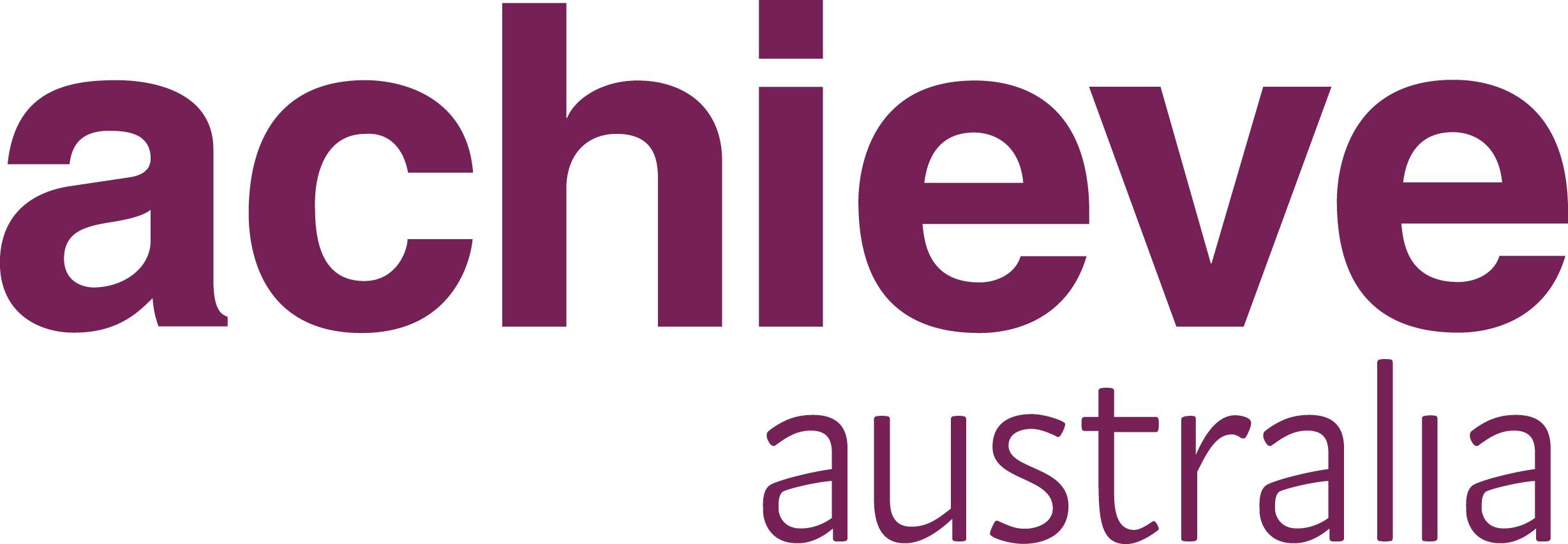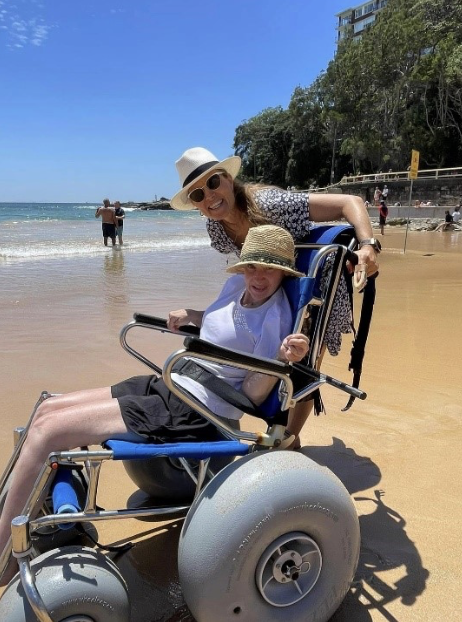By Fi Bridger, Achieve Australia Writer and Researcher
9 February 2023
Creating accessible beaches is gaining attention in Australia with one university project taking out a national award and a directory devoted to listing accessible beaches.
The number of accessible beaches in NSW is still very small – less than 20 out of more than 890 beaches along our coast. However, council interest is growing, and you can use this article to understand what makes a beach “accessible”, find a beach you can visit, and learn about the organisations making a difference.
Finding accessible beaches
Accessible Beaches is a great source of information. Created in 2016 by beach lover and wheelchair user Shane Hryhorec, Accessible Beaches became a registered charity in 2020. The organisation advocates for more access to beaches and runs training programs on disability awareness, inclusion, and how to run an accessible beach program.
It also maintains the Accessible Beaches directory including checking the integrity of those listed to ensure the list stays current. Only 16 beaches in NSW are listed with just 4 of those in Sydney. NSW has an estimated 892 beaches of which 100 are in Sydney.
Other resources include an article from ConnectAbilityAustralia on its best accessible beaches list. I also found this useful feature from Have Wheel Chair Will Travel about accessible beaches and accessible areas of beach precincts such as accessible children’s playgrounds.
What makes a beach accessible?
Features you will find at an accessible include some or all of these:
- matting along the sand to provide a path for a wheelchair to travel to the water
- fixed ramps from the sand into the water
- rental “beach chairs” - a type of wheelchair with wide wheels that can travel over sand without sinking
- floating wheelchairs available
- wheelchair lockers
- accessible change rooms and toilets
- wide pathways
- access points that are kept clear
- designated parking spots
- easy access to shade and water
- signage in multiple formats to suit people who are vision or hearing-impaired
- beach staff trained on accessibility and able to educate others on how to interact with pwds respectfully.
Many of these features also suit people of varying ages and mobility needs and not just pwds.
A first-hand account of visiting an accessible beach
I spent some summer days this season at the beach. I love the sun and swimming. I visited Manly, Byron bay.
For this article, the accessible beaches I have found include those on the lists above but also Manly, Collaroy, Newport and Bilgola beaches in Sydney.
As reported, most beaches and swimming generally are not accessible for pwds. Some beaches have more spots with a ramp to get into the water for a swim using a beach wheelchair, but this still requires 2 people to assist the pwd in the water, which also makes swimming and access very limited.
The beach chairs are made of metal and the wheels are made of plastic. The chairs are a one-size-fits-all so many pwd require assistance to be transferred into the chair. They do not have any seating restraints so each person assisting is required to hold a handle whilst in the water, otherwise the chair will drift off course and float away. The chair is designed for a person to be seated in an upright position and seated on top of the water, not submerged at all. The chair is designed not to capsize.
Beach wheelchairs are useful if you can get one. To date, they are nearly all only offered on a “first in, first served basis” which makes planning hard. On the plus side, there is no time limit for usage. Great for the person who has secured a chair but not great for anyone waiting for a turn.
I would like to be able to book a beach wheelchair online. Currently, securing a beach wheelchair involves a lot of organising. Saying that, the amount of fun and enjoyment you’ll have on one of these beach wheelchairs, far exceeds the planning involved.
From my research, chairs at Toowoon Bay on the Central Coast can be booked via a form on this page of the Central Coast Council website. There is no hire cost involved. Once you have booked this means you need to go to the beach at the allocated time instead of being able to swim spontaneously. If you know of other locations offering bookings, let us know and we will update this story.
U-Beach a national winner
The U-Beach project in Queensland promoting accessible beaches won Best Community Program at the 2023 Australian Disability Service Awards. The award shone a spotlight on accessible beaches that will hopefully encourage more councils to create welcoming beaches.
The U-Beach project was led by physiotherapy lecturer Sasha Job at Central Queensland University (CQU) Bundaberg campus. Bundaberg Regional Council, Surf Life Saving Queensland, Rotary, community education providers, and sporting clubs all collaborated on the project. Visit the U-Beach website or follow U-Beach on Facebook.
“The beach is the heart and soul of Australian coastal communities and U-Beach is helping to make this available to everyone by providing a standard for universal beach access,” Ms Job told media. Ms Job is also on the Board of Accessible Beaches.
Enjoy the beach and stay safe
We hope you find this article useful. We still have a month of summer ahead and maybe even a beach friendly Autumn. Stay safe and don’t forget your sunscreen and hat!
Explore more topics
- 2023
- disability
- inclusion
- YESequality
- belonging
- disability employment
- Accessible
- Community
- NDIS
- 2022
- Achieve Australia
- people with disability
- Accessibility
- Meet our Achievers
- The Sewing Basket
- blog
- travel
- women with disability
- Advocacy
- Art
- Australia
- COVID-19
- Disability services
- Employment
- Good nutrition
- Health tips
- Mental wellbeing
- NDS
- Sharing milestones
- Sydney
- achievable
- assistance dogs
- depression
- disability communications
- disability inclusion
- election
- employee of the year
- intellectual disability
- motherhood
- pregnancy
- social inclusion
- support workers

